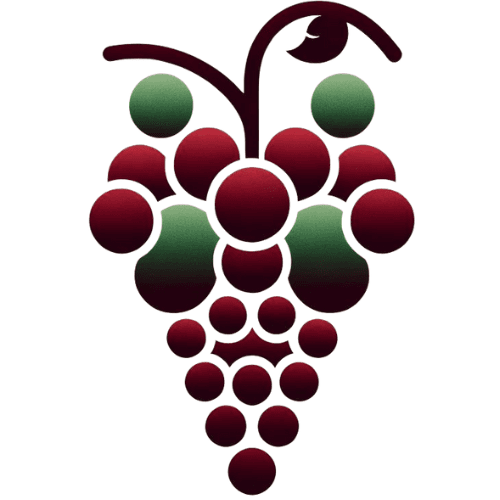Welcome to a journey through the world of Sangiovese wine, a beloved Italian varietal with a rich history and an even richer taste. This post will guide you through the premier regions known for producing the best Sangiovese wines. We'll explore the unique characteristics of each region, the distinct flavors they impart to the wine, and why these regions stand out in the global wine industry.
The Birthplace of Sangiovese: Tuscany
Tuscany, the birthplace of Sangiovese, is a region that needs no introduction. This Italian region is synonymous with Sangiovese, the grape variety that forms the backbone of some of the world's most revered wines.
The Tuscan landscape, with its rolling hills, abundant sunshine, and temperate climate, provides an ideal environment for Sangiovese grapes to thrive. The region's diverse soil types, ranging from limestone to clay, contribute to the complexity and depth of Tuscan Sangiovese wines.
Chianti, Brunello di Montalcino, and Vino Nobile di Montepulciano are among the most famous Tuscan wines made from Sangiovese grapes. Each of these wines reflects the unique terroir of their respective sub-regions within Tuscany.
Chianti, known for its tart cherry flavors and high acidity, is perhaps the most well-known Sangiovese-based wine. Brunello di Montalcino, made from a specific clone of Sangiovese, is known for its bold, full-bodied profile and aging potential. Vino Nobile di Montepulciano, another Sangiovese-based wine, is celebrated for its balance of fruit, tannin, and acidity.
Emilia-Romagna: The Versatile Region
Moving north from Tuscany, we arrive in Emilia-Romagna, a region that showcases the versatility of the Sangiovese grape. Here, the grape adapts to a different climate and soil composition, resulting in wines with a distinct character.
Emilia-Romagna is known for its lighter, more approachable style of Sangiovese. The wines from this region often display bright red fruit flavors, balanced by a refreshing acidity. The region's Sangiovese wines are typically less tannic than their Tuscan counterparts, making them perfect for early consumption.
Romagna, a sub-region of Emilia-Romagna, is particularly noted for its Sangiovese production. The Sangiovese di Romagna DOC, established in 1967, recognizes the quality and distinctiveness of the region's Sangiovese wines.
Marche: The Rising Star
East of Tuscany and Umbria, along the Adriatic coast, lies Marche, a region that's emerging as a new star in the Sangiovese universe.
Marche's Sangiovese wines are known for their robust structure and deep, concentrated flavors. The region's hilly terrain and maritime influence contribute to the development of these characteristics in the grapes.
The Rosso Conero DOC and Rosso Piceno DOC are two appellations within Marche that produce noteworthy Sangiovese wines. These wines often blend Sangiovese with Montepulciano, another popular Italian grape variety, to create wines with a unique flavor profile.
Umbria: The Heart of Italy
Umbria, often referred to as the heart of Italy due to its central location, is another region that produces excellent Sangiovese wines.
The region's Sangiovese wines are known for their elegance and finesse, with a perfect balance of fruit, acidity, and tannin. The Montefalco Rosso DOC, a blend of Sangiovese, Sagrantino, and other grape varieties, is a perfect example of Umbria's winemaking prowess.
Umbria's unique microclimate, with its hot summers and cold winters, along with its clay and limestone soils, contribute to the high quality of its Sangiovese grapes. The region's commitment to sustainable viticulture practices also plays a role in the quality and character of its wines.
Sangiovese Beyond Italy: California and Australia
While Sangiovese is quintessentially Italian, it has also found a home in other parts of the world, notably California and Australia.
In California, Sangiovese is grown in regions such as Sonoma County and the Sierra Foothills. The state's warm climate and diverse soils allow the grape to express itself in new and exciting ways. California Sangiovese wines often exhibit ripe fruit flavors, balanced by a vibrant acidity.
Australia, particularly the McLaren Vale and King Valley regions, has also had success with Sangiovese. The grape's ability to adapt to various soil types and climates has allowed it to thrive in these regions. Australian Sangiovese wines are known for their bright fruit flavors and food-friendly nature.
The Future of Sangiovese
The future of Sangiovese looks bright, with new regions exploring the potential of this versatile grape variety.
Regions such as Argentina and South Africa have started experimenting with Sangiovese, with promising results. As winemakers continue to understand and respect the unique characteristics of the grape, we can expect to see more exciting Sangiovese wines from around the world.
The continued success of Sangiovese is also tied to the ongoing efforts towards sustainable viticulture. As regions adapt to the challenges posed by climate change, the focus on sustainable practices will ensure the longevity of the Sangiovese grape.
The Global Journey of Sangiovese
From its roots in Tuscany to its new homes in California and Australia, Sangiovese has proven itself to be a truly global grape variety. Each region brings out a different facet of the grape, creating a diverse array of wines for us to enjoy. As we continue to explore and appreciate the world of Sangiovese, we can look forward to more delightful discoveries from this versatile grape.

